In this article explore the 47 Laboratory Apparatus List for the school’s physics, chemistry, and biology laboratories and how they are important for understanding the subjects. And you can purchase all these school laboratory apparatuses we listed here from Labkafe.com.
The three fundamental disciplines of Science are Physics, Chemistry and Biology, and to have a solid knowledge in all these, one needs to be equally sound in both theory and practical concepts. The practical portion of these subjects help the students learn the theories effectively and help them understand the concepts more thoroughly.
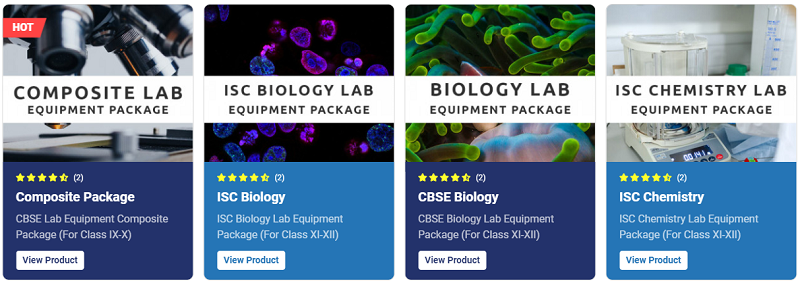
Labkafe, a leading school lab equipment supplier, supplies all the necessary lab apparatus, instruments, chemicals, glassware, etc., for Physics, Chemistry and Biology lab at an affordable price. The apparatus provided are made of top-quality building materials and the product quality is always up-to-the mark. Maintenance leaflets are also given to ensure smooth functioning of the apparatus.
Let us now look at some common laboratory apparatus including their instruments that are used in the Physics, Chemistry and Biology laboratories and how they are important for understanding the subjects.
i) Biology Lab Apparatus

1) Compound microscope:
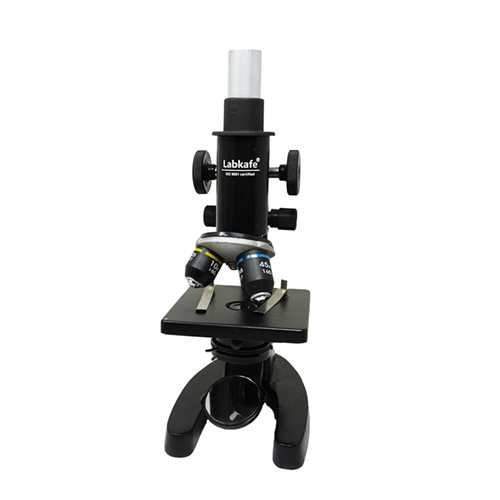
A compound microscope is an easily identifiable instrument with its characteristic curved arm, heavy flat base and delicate lens-bearing tubes stacked on top. Its primary function is to magnify the view of an object by enlarging it twice using the objective and oculus lenses.
Equipment required: a) Base or the foot, b) piller, c) arm, d) body, e) stage, f) clips, g) diaphragm, h) nose piece, i) adjustment knobs, j) illuminator, k) condenser, l) ocular or eyepiece and m) objectives.
2) Photosynthesis Apparatus:
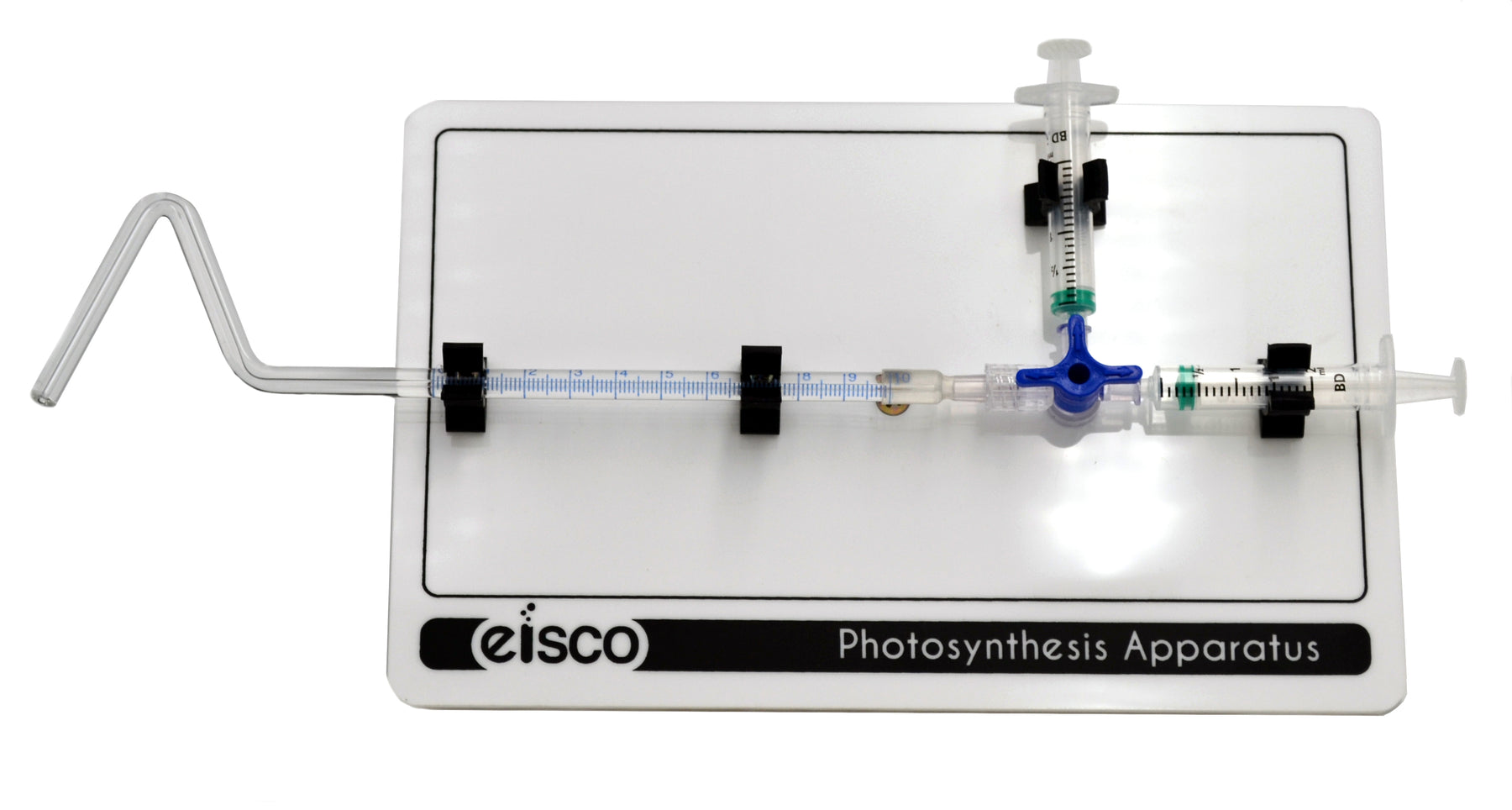
This apparatus is used to estimate the rate of photosynthesis in terms of the rate of evolution of gas by an aquatic plant. The variation of rate of photosynthesis with light intensity, temperature and carbon dioxide concentration can be shown as well.
Equipment required: a) Two syringes, b) collecting tubes, c) three-way tap, and d) a black board for mounting.
3) Ganong’s potometer:
This apparatus is used to measure the transpiration rate of a plant in a laboratory. Transpiration is the process by which plants give off water vapour through the stomata present in their leaves.
Equipment required: a) Glass tubes, b) a wide-mouthed glass cylinder, c) a graduated capillary tube, d) a graduated horizontal bar, e) a beaker, and f) a rubber cork.
4) Farmer potometer:
It is an apparatus used to measure the rate of water uptake by a cut plant shoot.
Equipment required: a) A glass bottle type reservoir, b) a rubber stopper, c) a bent and graduated capillary tube, d) a funnel and e) a short glass tube.
5) Fiberglass models (3D):
These are top-quality fiberglass models depicting various parts of the human anatomy like that of a human eye, a human kidney, etc. The models serve as excellent practical and visual aids for students. The models are made of high-grade fiberglass that ensures a longer shelf life.
6) Rexine chart:
Durable educational rexine charts containing information regarding the theoretical aspects of the subject that are useful for performing the experiments are an essential part of the biology laboratory. These charts are helpful for both teachers and students to relate to the topic being discussed.
7) Human skeleton model:
The human skeleton acts as the fundamental basis of the human body. This structure is made up of several separate bones and cartilages. There are also bands of connective tissue, including ligaments and tendons, that are attached to the bones. The human skeleton model will allow the students to thoroughly understand the framework of bones and joints found in the human body.

8) Prepared slides:
Prepared specimens mounted on slides are viewed under a microscope to get a magnified view of the components of the particular cell. Samples of the prepared slides include amoeba, hydra, daphnia, cell division, blood smear, etc.

9) Museum specimens:
The museum specimens are a display of the most carefully selected biological specimens, preserved in life forms and are securely mounted on transparent plates in crystal clear sealed jars. These specimens are properly labeled for the students to understand.

ii) Chemistry Lab Apparatus

10) Analytical balance:
An analytical balance is a high-precision and high-sensitive laboratory apparatus from our list that is capable of measuring even a tenth or a hundredth of a milligram and is used to measure very small amounts of solids. The weighing area of an analytical balance is boxed in a glass cubicle.
11) Kipp’s apparatus:
Kipp’s apparatus is a super-simple apparatus that is used for preparing a small volume of gas by reacting a solid with a liquid. The most common gas prepared in Kipp’s apparatus is hydrogen sulphide by reacting iron sulphide with hydrochloric acid. The apparatus consists of three interconnecting globes. The middle globe contains the solid reagent. The upper globe constitutes a funnel with a long neck that goes down to the bottom of the apparatus. Dilute acid is poured through the upper globe that comes in contact with the solid reagent in the middle globe, thereby liberating the desired gas.
Equipment required: a) Kipp’s apparatus, b) funnel, c) iron sulphide and d) dilute sulphuric acid.
12) Glasswares:
Glasswares are an integral part of the chemistry laboratory. These are made of glass and include test tubes, measuring cylinders, beakers, pipettes, burettes, volumetric flasks, etc.
13) Chemicals:
Chemicals are the most essential for performing different experiments in the chemistry laboratory. They come in different forms like powder form, solution form, crystals, pellets, etc. Chemicals include salts, acids, bases, reagents, indicators, etc., that are used for the experiments.
14) Chromatography apparatus:
This apparatus is used to carry out chromatography technique using paper sheets as the adsorbent. Paper chromatography is a cost-effective method of separating dissolved chemical substances by their different migration rates across the sheets of paper.
Equipment required: a) Chromatographic chamber, b) measuring jar, c) Whatman filter paper strips, d) isopropyl alcohol, e) glass rod, f) capillary tube, g) distilled water, h) pencil and scale and i) the mixture to be tested.
15) Copper calorimeter:
A copper calorimeter is used for measuring the heat of chemical changes or any physical changes and also their heat capacity. Copper is a good conductor of heat and has a very low specific heat capacity.
Equipment required: a) Copper calorimeter, b) a stirrer, c) an insulating cover, d) two thermometers, e) a beaker, f) water, g) a metallic solid cylinder that is insoluble in water, h) weighing machine, i) a piece of strong, non-flexible thread, j) tripod stand, h) wire gauze and i) Bunsen burner.
16) Rexine chart:
Durable educational rexine charts containing information regarding the theoretical aspects of the subject that are useful for performing the experiments are an essential part of the chemistry laboratory. These charts are helpful for both teachers and students to relate to the topic being discussed.
17) 3D Periodic table:
It is a three dimensional interactive periodic table that shows the arrangement of elements in groups and periods according to their atomic numbers.
18) pH-meter:
This apparatus helps determine the acidic or alkaline nature of aqueous solutions by identifying their pH values. pH of an aqueous solution indicates the concentration of hydrogen ions in the solution.
Equipment required: a) Sample to be tested, b) acetate buffer, c) ammonium buffer, d) tissue paper and e) a pH-meter.

19) TDS-meter:
This high-precision apparatus is used in the laboratory to measure the amount of total dissolved solids (TDS) in a water sample. A TDS-meter measures the conductivity of the sample and estimates the TDS from that reading.

20) Digital balance:
It is a weighing machine that provides an accurate value of weight of any object. It is very important while carrying out experiments in the laboratory because the balance can precisely measure the amount of chemicals. A display on the balance shows the weight of the object placed on it.
iii) Physics Lab Apparatus

21) Reflection of sound:
The apparatus for reflection of sound demonstrates the second law of reflection, i.e., the angle of incidence is equal to the angle of reflection for any setting.
Equipment required: a) Two 12 inch long stainless steel pipes and b) a superior quality laminated board with a protractor printed on it.
22) Slinky spring:
A slinky spring or a stretched spring is used to determine the velocity of a pulse propagated through it. Pulse is a wave produced by a single disturbance in a given medium.
Equipment required: a) A flat wire coiled copper slinky spring, b) a metre rod, c) a stopwatch and d) a small wooden board.
23) Ohm’s law apparatus:
This apparatus is used to study the dependence of potential difference across a resistor on the current passing through it and determine its resistance. Ohm’s law states that, the current through a conductor between two points is directly proportional to the voltage across the two points.
Equipment required: a) A battery eliminator (0-12 volts, 2 amps), b) a voltmeter, c) an ammeter, d) a rheostat, e) a resistance box and f) connecting wires.
24) Gold leaf electroscope:
It is a type of electroscope consisting of two gold leaves and is used for identifying the presence of electrical charge in a body along with the nature of the charge. The electroscope can also determine whether a body is a conductor or an insulator. It can be used to detect the charge by putting the body under test in contact with the metal cap. If the leaves diverge, the body is charged and if there is no effect on the leaves, then the body is uncharged.
Equipment required: a) A gold leaf electroscope, b) any materials that can be tested like carpet, c) rubber or vinyl and d) a metal foil.
25) Dynamo model:
AC dynamo works on the principle of electromagnetic induction. In this case, electric current is induced in the coil placed in a changing magnetic field.
Equipment required: a) Conducting wire, b) a permanent magnet, c) a soft iron core, d) slip rings and e) carbon brushes.
26) Electric motor model in acrylic body:
An electric motor model in an acrylic body is used to demonstrate how an electric motor converts electrical energy into mechanical energy.
27) Kaleidoscope:
A kaleidoscope is an amazing optical instrument that demonstrates the phenomenon of multiple reflections. It is a tube consisting of two or more reflectors placed at an angle to one another. When coloured pieces of glasses are placed between the reflectors and the tube is rotated, one can see the formation of symmetrical patterns from one end. The underlying principles of a kaleidoscope are laws of reflection of light and that white light is a combination of VIBGYOR.

Equipment required: a) A kaleidoscope and b) small coloured glass pieces.
28) Multimeter:
A multimeter is a handheld tester used to measure electrical voltage, current, resistance and other values. Multimeters can be both analog and digital and are useful for measuring battery voltage, detecting faults and complex diagnostics, etc.

Equipment required: a) Three carbon resistors, b) one standard resistance coil, c) a battery eliminator with tapping, d) a step-down transformer with two tapping, e) a 100 ohm resistor , e) a multimeter and f) a plug key.
29) Periscope:
It is an optical tool which is used when an obstacle or position prevents direct line-of-sight observation from the observer’s position. A periscope basically works on the principle of reflection of light. It is constructed by using two mirrors placed parallel to another at an angle of 45 degrees in a box.
Equipment required: a) Two circular mirrors, b) two 12” sections of PVC pipe (one with a slightly larger diameter), c) two PVC elbow joints and d) putty.
30) p-n junction diode apparatus:
A p-n junction diode is a semiconductor device with two terminals or two electrodes that only permits electric current to flow in one direction while blocking the other or reverse direction. The associated apparatus is used to observe the diode characteristics-reverse V-I characteristics and forward V-I characteristics.
Equipment required: a) A p-n junction diode, b) a 3 V battery and a 50 V battery, c) a high resistant rheostat, d) a 0-3 V voltmeter and a 0-50 V voltmeter, e) a 0-100 mA ammeter and an 0-100 μ ammeter, f) connecting wires and g) one way key.
31) Zener diode:
A Zener diode is a semiconductor device constituting a p-n junction which conducts the current in reverse direction when a particular specified voltage is attained. It allows the current to flow in forward or reverse direction. The diode has a reverse breakdown voltage and so it can continuously function in a reverse bias mode without getting damaged. A Zener diode is used to study the reverse characteristic curve and determine the reverse breakdown voltage.

Equipment required: a) A battery, b) a rheostat, c) a small resistance (200 ohm), d) a milliammeter, e) a voltmeter, f) a key and g) a Zener diode.
32) Conversion of galvanometer to ammeter and voltmeter:
A galvanometer is an instrument used for detecting small electric current or measuring its magnitude. A voltmeter, also called a voltage meter, is a device that is used to measure the potential difference, or voltage, between two points in an electrical circuit. An ammeter is an instrument for measuring the current flowing through a live circuit.
Equipment required: a) A galvanometer, b) a cell, c) a rheostat, d) an ammeter of desired range, e) a resistance wire, f) a key and g) a screw gauge; h) a galvanometer of known resistance, i) a battery eliminator, j) a one way key, k) a rheostat, l) a voltmeter of 3 V range, m) connecting wires, n) a resistance box and o) sandpaper.
33) Searle’s apparatus:
The Searle’s apparatus is used to determine the Young’s modulus of the material of a wire. The Young’s modulus of a material indicates how easily the material can be stretched and deformed and is expressed as the ratio of tensile stress to tensile strain.
Equipment required: a) Searle’s apparatus, b) two long steel wires of equal length and diameter, c) a metre scale, d) a set of ½ kg slotted weights, e) a 1 kg weight hanger and f) a 1 kg dead load.
34) Parallelogram apparatus:
The Parallelogram apparatus, also called the Gravestand apparatus, is a device used to demonstrate the parallelogram law of vector addition.
Equipment required: a) Parallelogram apparatus, b) plumb line, c) two hangers with slotted weight, d) a wooden block whose weight is to be measured, e) a thin strong thread, f) a white drawing paper sheet, g) drawing pins, h) a mirror strip, i) a sharp pencil, j) a half metre scale, k) set squares and l) a protractor.
35) Optical bench with accessories:
The optical bench is a long steel pipe with a linear scale applied to it. There are light sources, lenses and screens placed on the bench so that image formation can be observed. An object is put on one side and corresponding image distance can be measured. The accessories of an optical bench include lens holder, ground glass screen, wire gauge screen, centering pin, universal lens holder, parallax pin, adjustable metallic stand, light screen, liquid lens pointer, mirror stand and adjustable slit.
Equipment required: a) convex lens, b) a lens holder, c) a screen fixed to a stand, d) a meter scale, e) a small scale, f) a lighter, g) a small candle with a stand, h) illuminated wire gauze and i) a convex mirror.
36) Hooke’s Law apparatus:
The Hooke’s Law apparatus is used to show that the relationship between the extension on a spring is proportional to the load applied to it.
Equipment required: a) A spring, b) a measuring ruler and c) weights.
37) Spring constant apparatus:
This apparatus is used to measure force by using Hooke’s law. It consists of a retort stand on which a spring is clamped.
Equipment required: a) Spring constant apparatus, b) slotted weights, and c) a ruler.
38) Sonometer apparatus:
A sonometer apparatus is used for demonstrating the relationship between the frequency of the sound produced by a string when it is plucked and the tension, length and mass per unit length of the string.
Equipment required: a) Sonometer apparatus, b) a set of tuning forks of known frequencies, c) a weight hanger of 0.5kg, d) 0.5 kg slotted weights, e) a rubber pad and f) a paper rider.
39) Physical balance:
A physical balance or a beam balance is a weighing instrument that helps in measuring the weight of a body by utilizing the principle of moments.
Equipment required: a) A physical balance, b) a weight box, c) a spirit level and d) two objects of different mass.
40) Hot plate:
A hot plate is an electronic device that is used to uniformly heat a liquid with or without stirring it.
Equipment required: a) A calorimeter, b) a wooden with a lid, c) a stirrer, d) a thermometer, e) distilled water, f) cotton, g) beakers, h) a hot plate and i) a measuring jar.
41) Meter bridge:
It is an electrical apparatus used to measure the value of unknown resistance by implementing the principle of a Wheatstone bridge.
Equipment required: a) a meter bridge, b) Leclanche cell, c) galvanometer, d) resistance box, d) jockey, e) one way key, f) a resistance wire, g) a screw gauge, h) a metre scale and i) connecting wires.
42) Potentiometer:
It is an electronic device that compares the electromotive force of two cells, measures the cell’s internal resistance and detects the potential difference across a resistor.

Equipment required: a) Potentiometer, b) Daniel cell and Leclanche cell, c) jockey, d) a battery eliminator, e) a resistance box, f) a galvanometer, g) one-way and two-way keys, h) a rheostat, i) an ammeter and j) connecting wires.
43) Simple pendulum apparatus:
A simple pendulum consists of a brass sphere with a bob suspended from a rigid stand. It shows the simple harmonic motion as the acceleration of the bob is directly proportional to the displacement from the mean position and is always directed to it.

Equipment required: a) A clamp with a stand, b) a split cork, c) about 2 metres long cotton thread, d) Vernier caliper, e) a bob, f) a stopwatch and g) a metre scale.
44) Resonance apparatus:
This apparatus is used to detect the resonance positions in air columns from which the speed of sound in air can be determined at room temperature.
Equipment required: a) Resonance column apparatus, b) tuning forks of known frequencies and c) a rubber hammer.
45) Viscosity (Stoke’s law) apparatus:
The viscosity apparatus is useful in determining the viscosity of oils, water, glycerin and other liquids. It utilizes the essence of the Stoke’s law which expresses the drag force resisting the fall of small spherical bodies through a fluid.
Equipment required: a) A long cylindrical glass jar, b) any transparent viscous fluid, c) a metre scale, d) a spherical ball, e) a screw gauge, f) Vernier calipers, g) a stop clock and h) thread.
46) Archimedes Apparatus:
This apparatus demonstrates that the buoyancy acting on a body submerged in a liquid corresponds to the weight of the displaced liquid.
Equipment required: a) An iron stand, b) 500 ml and 250 ml beakers, c) an overflow can, d) a weighing balance. e) a wooden base, f) a sphere, g) a spring balance and h) a rectangular copper block.
47) Rexine chart:
Durable educational rexine charts containing information regarding the theoretical aspects of the subject that are useful for performing the experiments are an essential part of the physics laboratory. These charts are helpful for both teachers and students to relate to the topic being discussed.

To conclude, we may say our 47 Laboratory Apparatus List helped you to understand which apparatus will be good for your student to understand science concepts. Hoped, you clearly understand the use of all the lab apparatus. We have various school lab equipment packages as per the school board of CBSE, state board, and others. You can book a one-to-one consultation with our lab expert to learn more about the school lab setup.










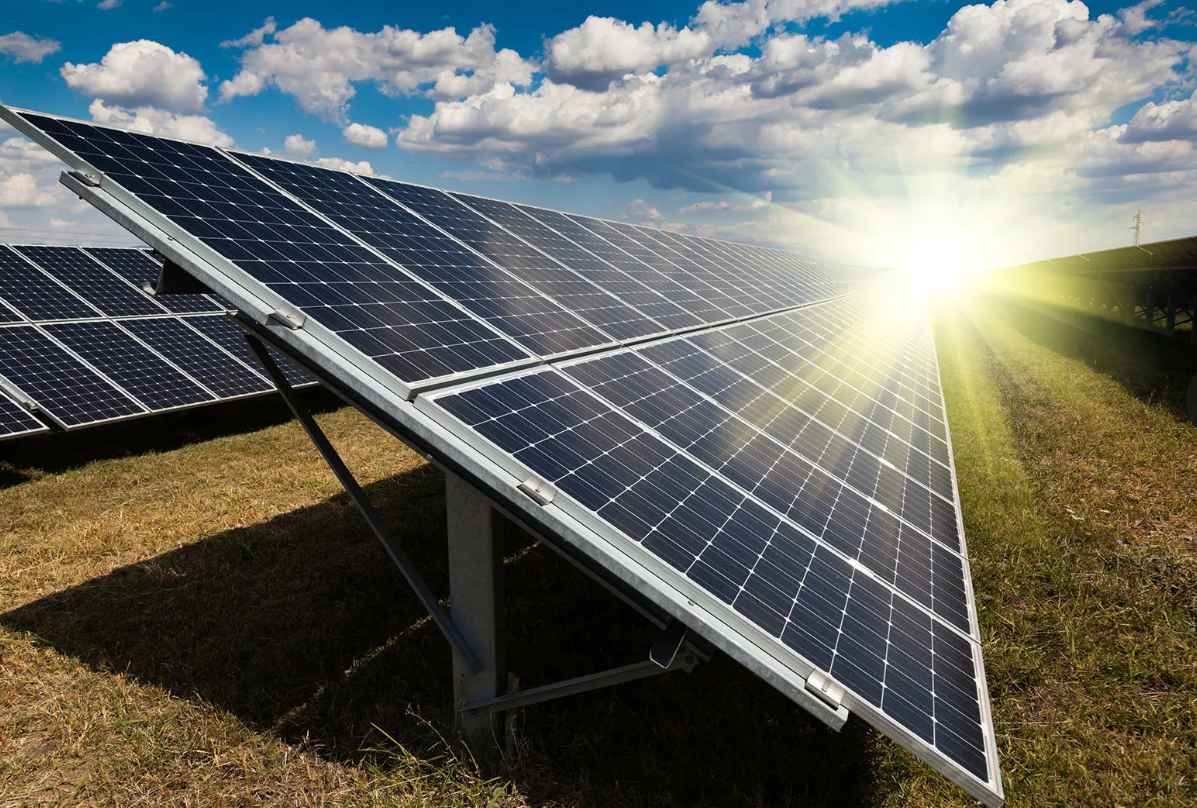
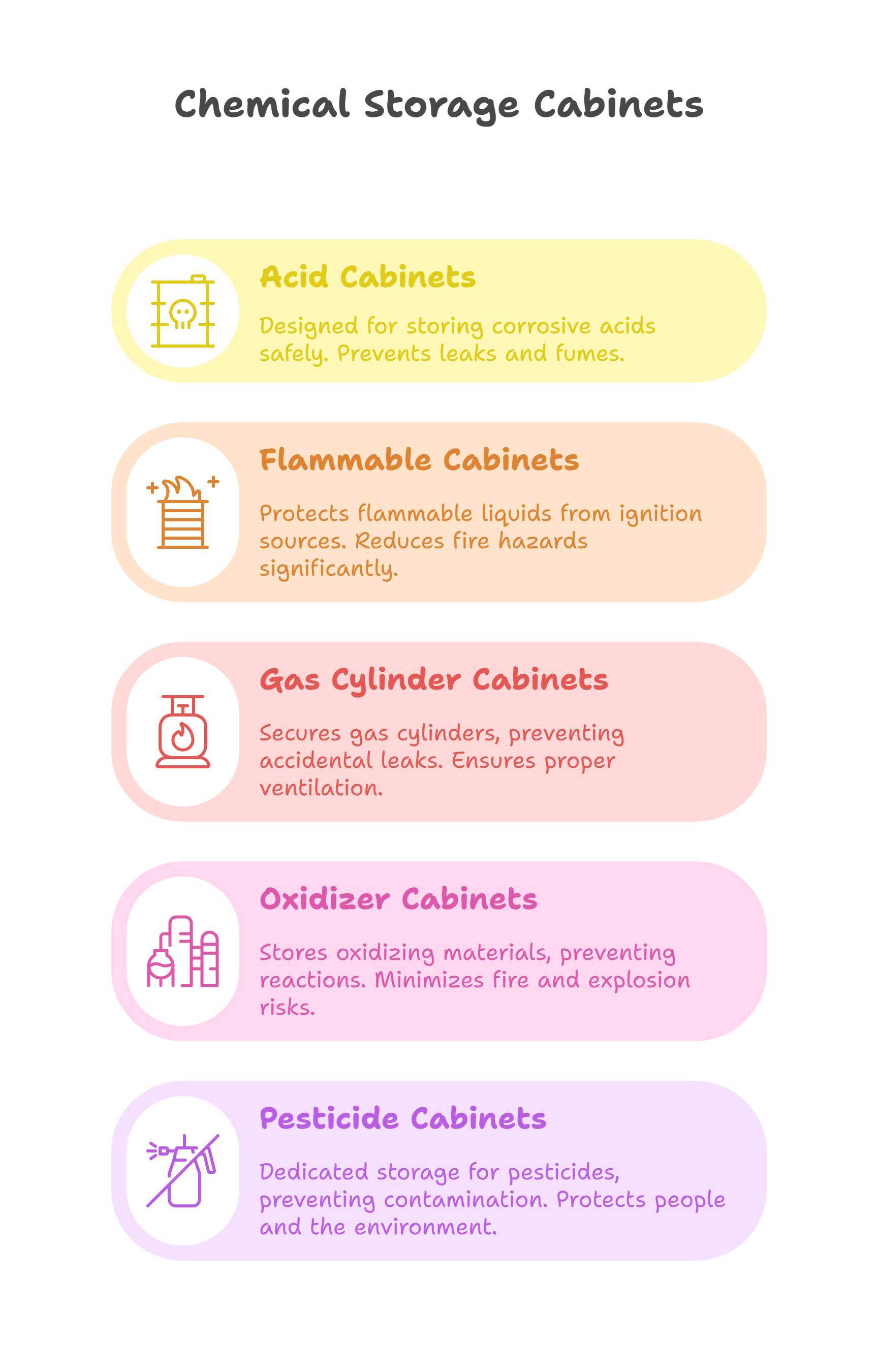
Leave a Reply